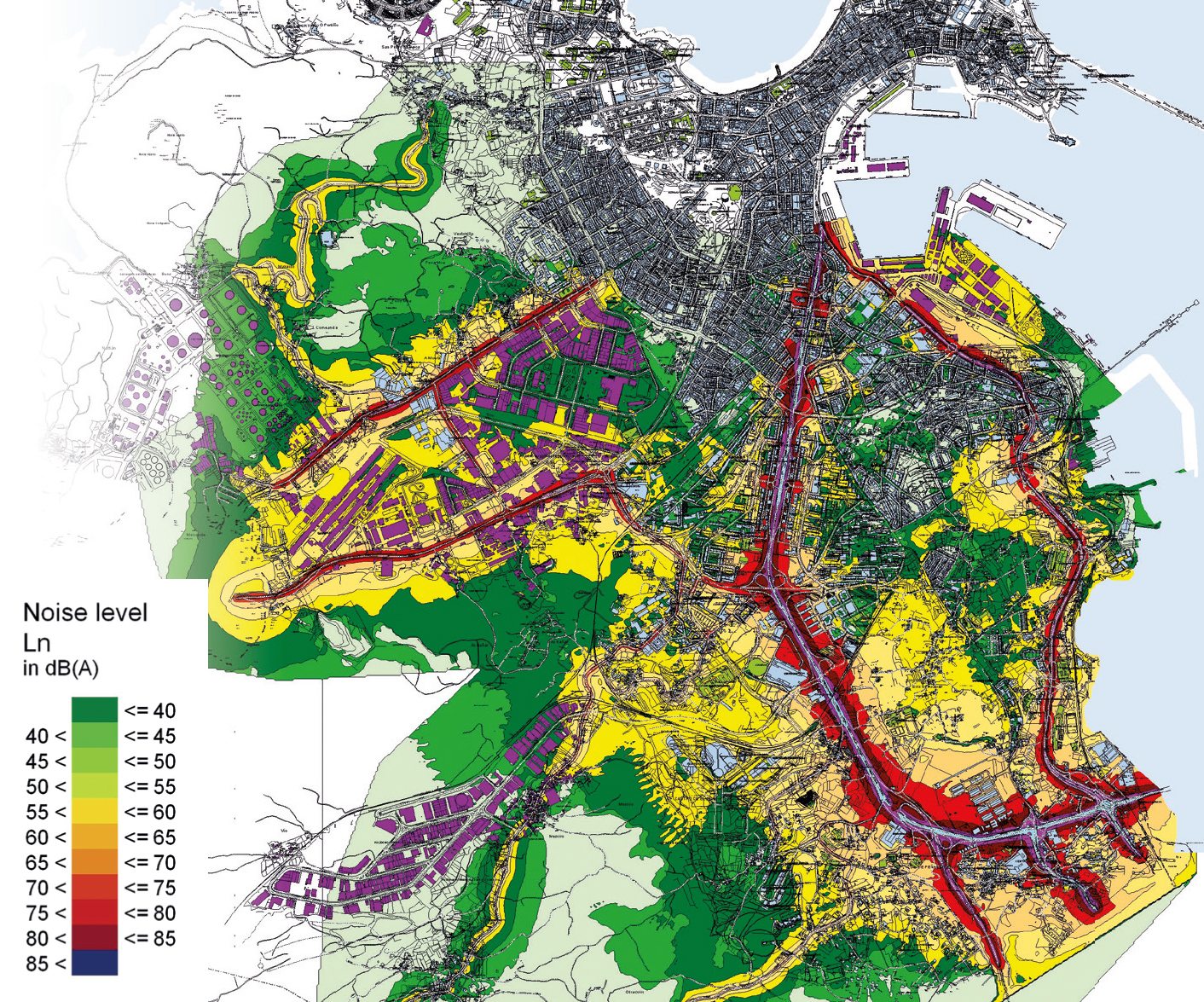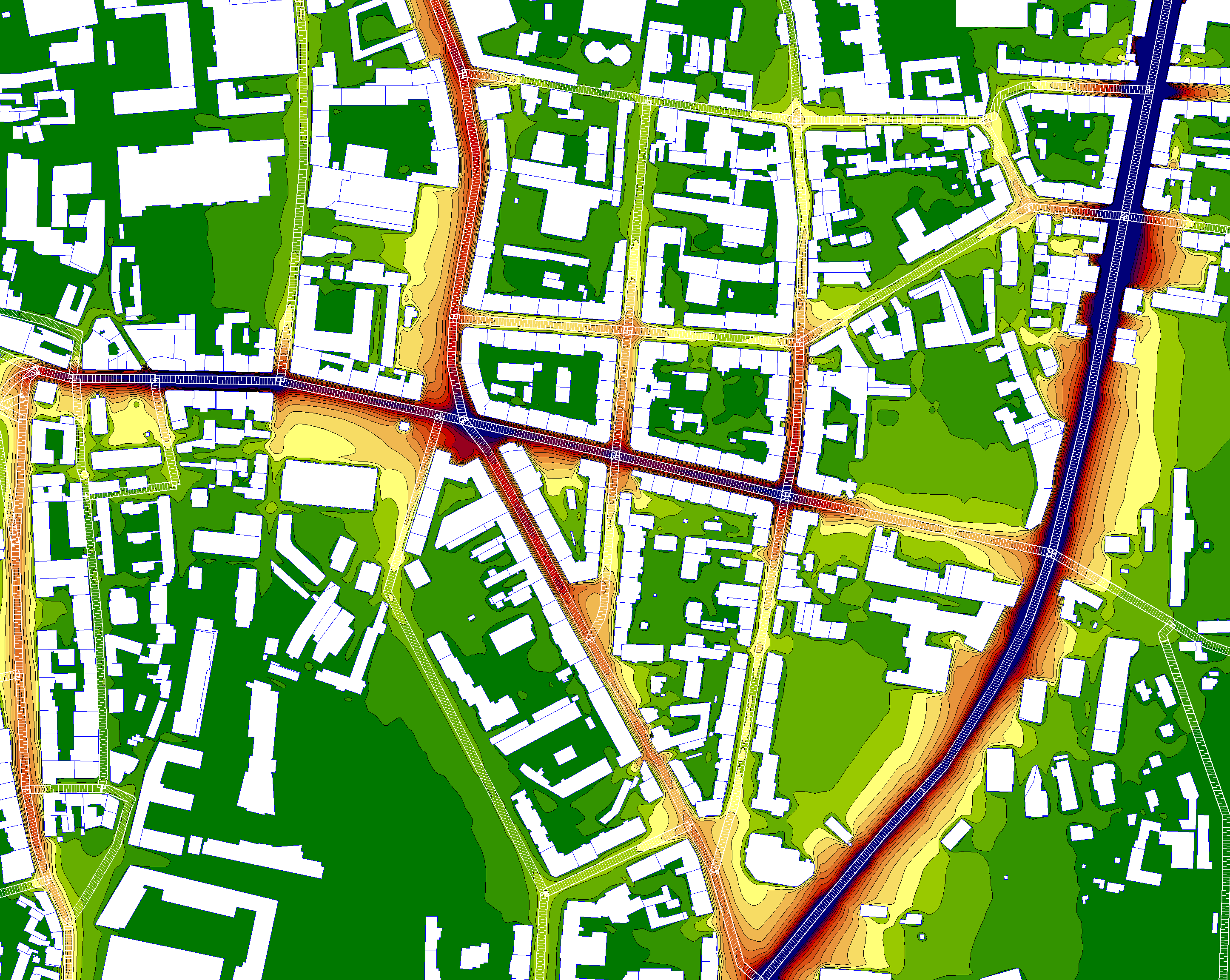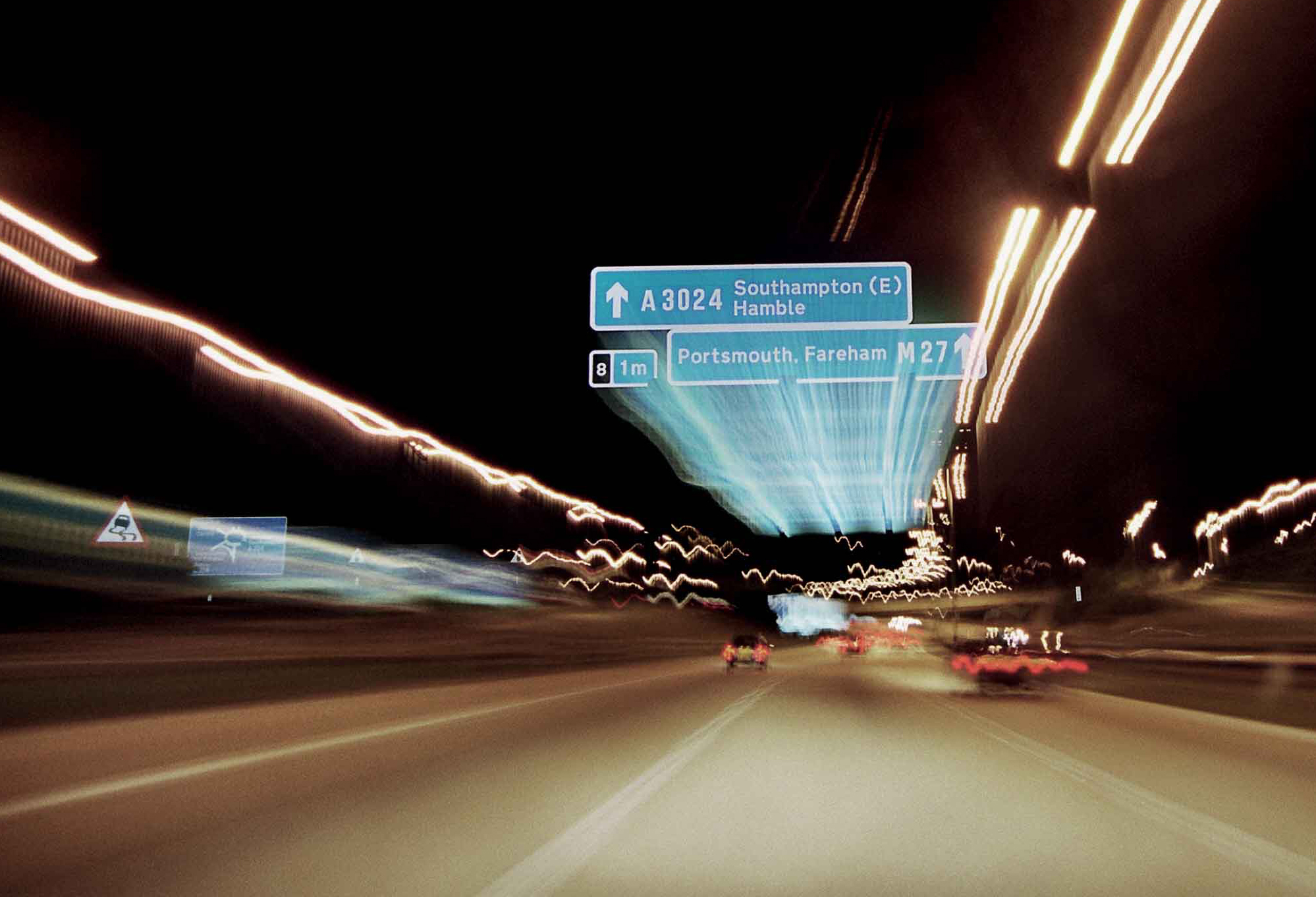Traffic noise is a widespread nuisance that can impact where and how we choose to live, property prices and our quality of life. Better planning and use of mitigation factors can make a significant difference
Traffic is one of the top five sources of nuisance noise – along with industry, construction, sport and leisure and general neighbourhood noise.
Road traffic is also one of the most diverse sources of noise. You know where it’s going to come from, but less often what the noise will be as the volu

Noise from roadworks can be a problem
Traffic noise is a widespread nuisance that can impact where and how we choose to live, property prices and our quality of life. Better planning and use of mitigation factors can make a significant difference
Traffic is one of the top five sources of nuisance noise – along with industry, construction, sport and leisure and general neighbourhood noise.
Road traffic is also one of the most diverse sources of noise. You know where it’s going to come from, but less often what the noise will be as the volume and frequency depends on amount of traffic, type of vehicle, road surface, weather and many other variables.
The impacts of noise in our daily lives are varied and significant. They can range from annoyance, sleep deprivation, and nervous and aggressive behaviour, to hearing loss, high blood pressure and heart disease. Nuisance noise can influence brain activity and disturb concentration and performance, for example learning ability, and affect our general well-being, so its effects need to be carefully considered and where possible minimised.
When measured, paving stones can produce the highest decibels of road noise – over 106dB(A) – and double layer porous asphalt concrete (DLPAC) is the quietest – 90dB(A). When the level of a sound is increased by 10dB(A), the subjective loudness roughly doubles, so that is a significant difference between the surfaces.
The harder an engine is working, the more noise it emits, so the gradient of the road can have a major influence on the noise emission levels. Where possible gradients should be kept to a minimum in areas where people will be affected by noise. A vehicle’s speed and power also play a key part; the sound power for one truck is equivalent to that of 10-20 passenger cars.
Alternatively, physical changes may be needed to reduce the noise emissions, including reducing road width or installing absorbers or resonators. Depending of the absorption value, these are described variously as a reflective wall (<4dB), an absorptive wall (>4dB) or a highly absorptive wall (>8dB).
Noise protection is termed ‘active’ when it includes features such as the erection of noise protection walls or berms, or noise reduction measures at bridges. Noise protection is ‘passive’ when it means the installation of noise protection windows and ventilation in nearby buildings.
Whatever the influence on noise emissions, it is critical that any barrier is stable and durable. Being exposed to the weather and passing vehicles means barriers should be fire resistant, able to withstand the attrition from loose material on the road, easy to maintain and where possible have an appealing layout or design.
Using natural materials for barriers can have great benefits, although the measured and published results about the effectiveness of tree belts for noise reduction vary enormously.
Tree belts of a width between 15 - 30m have been said to offer a reduction of between 5 to 10dB. Natural green belts may well offer bigger psychological than physical effects, but the benefits of this should not be overlooked.
Reducing noise costs money so a cost benefit analysis will need to prove that undertaking it is sensible economically. Noise costs money in health expenses and the reduction of property value in high noise areas – so reducing the noise saves money, thus generating benefits.
Worldwide there are a number of commercial software packages available that can be used to calculate and model environmental noise. There are, however, only five complete software packages sold on a worldwide basis.
A noise map is created using simulation software that compiles a model from data representing the infrastructure and the buildings involved. Noise maps can often be created using existing data sources, but each noise map is unique according to project size, geography and objective. Nearly all of the required data should be available in digital form and can be obtained from land surveying offices, building authorities, traffic planners and architects.
The noise levels in the simulation can be measured or calculated and theoretical noise reduction measures can be tried and evaluated. Simulations mean different scenarios can be planned for prior to building a new road. This is a vast improvement over having to wait for construction to be completed before actual noise levels can be measured to see if mitigation efforts have been successful.
334 SoundPLAN has been used for more than 25 years for mapping noise and air pollution and it now has over 5,000 users, in more than 60 countries, including governments, consultants and researchers. The software is used by engineers responsible for developing and testing noise and air pollution reduction strategies for road, rail and industry projects around the globe. This may be for land use, air purity planning, environmental impact studies or public enquiries.
Wall Design can be used to find the breakpoint between the barrier cost and the achieved noise reduction. The cost vs. noise reduction breakpoint changes dramatically when, for example, the maximum height of a noise barrier is lowered. The maximum height of a barrier may be set by planning constraints or the visual impact.
The SoundPLAN Wall Design Module helps you to generate graphic presentations to visualise the interdependence between the acoustical parameters, the cost and the noise reduction. Within a short period of time the user can compute 10-20 barrier scenarios and document how these scenarios compare to each other. Comparisons include barrier length, cost, the number of receivers below and above the target levels, cost vs. noise reduction breakpoint, and others.
Most environmental noise investigations are done to assist planning approval procedures. This might be setting up a new noise emitting structure, like a new road, rail track, airport or any type of industrial facility. Alternatively, it could mean an expansion or a major change to a noise emitting structure. This could be the addition of lanes to a road or the expansion to, or changing of usage of, an industrial site.
It is considered a major alteration if a road is enlarged by one or several continuous lanes or if the rating level of a transport route increases by at least 3dB(A). Also, if any building reaches the noise level of 70dB(A) during the day and of 60dB(A) during the night for the first time. It would also count as a major alteration if an existing level of traffic noise of at least 70dB(A) during the day or 60dB(A) at night is increased through the alteration.
A road is considered to be ‘major’ if it has more than 3 million vehicle passes per year, for an average of 8,219 vehicles a day.
It is important to include a planning horizon of 10-20 years to consider future development.
In an ideal situation noise mapping should be carried out before the construction of a road so that the full range of measures can be considered and the relevant ones implemented in the most cost-effective way. However, although it can be more expensive, it is still worth considering retrofitting noise mitigation elements to roads where the nuisance noise is harming people’s health and well-being.
Roads are the arteries of our nations, so we shouldn’t be putting the population’s arteries at risk.
Traffic is one of the top five sources of nuisance noise – along with industry, construction, sport and leisure and general neighbourhood noise.
Road traffic is also one of the most diverse sources of noise. You know where it’s going to come from, but less often what the noise will be as the volume and frequency depends on amount of traffic, type of vehicle, road surface, weather and many other variables.
The impacts of noise in our daily lives are varied and significant. They can range from annoyance, sleep deprivation, and nervous and aggressive behaviour, to hearing loss, high blood pressure and heart disease. Nuisance noise can influence brain activity and disturb concentration and performance, for example learning ability, and affect our general well-being, so its effects need to be carefully considered and where possible minimised.
Surface issues
There are three main parameters of the road surface which affect noise emission levels. These are the surface material, roughness of the road surface and road surface condition, whether it’s wet or dry. The ISO - International Organisation for Standardisation – an independent, non-governmental membership – has introduced a standardised method to measure the effect of a road surface on the noise emission of traffic (E ISO 11819-2).When measured, paving stones can produce the highest decibels of road noise – over 106dB(A) – and double layer porous asphalt concrete (DLPAC) is the quietest – 90dB(A). When the level of a sound is increased by 10dB(A), the subjective loudness roughly doubles, so that is a significant difference between the surfaces.
The harder an engine is working, the more noise it emits, so the gradient of the road can have a major influence on the noise emission levels. Where possible gradients should be kept to a minimum in areas where people will be affected by noise. A vehicle’s speed and power also play a key part; the sound power for one truck is equivalent to that of 10-20 passenger cars.
Mitigating factors
When planning new roads or improvements to existing ones, it is important to protect people from the harmful effects of nuisance noise. In order to minimise noise, there are a number of steps which can be taken. These may be designed to work on the existing roads by getting drivers to adapt their driving style. Some examples include using speed limits or posting signs to raise the awareness that they are passing through sensitive areas. Or traffic restrictions, especially for heavy vehicles, can be implemented.Alternatively, physical changes may be needed to reduce the noise emissions, including reducing road width or installing absorbers or resonators. Depending of the absorption value, these are described variously as a reflective wall (<4dB), an absorptive wall (>4dB) or a highly absorptive wall (>8dB).
Noise protection is termed ‘active’ when it includes features such as the erection of noise protection walls or berms, or noise reduction measures at bridges. Noise protection is ‘passive’ when it means the installation of noise protection windows and ventilation in nearby buildings.
Whatever the influence on noise emissions, it is critical that any barrier is stable and durable. Being exposed to the weather and passing vehicles means barriers should be fire resistant, able to withstand the attrition from loose material on the road, easy to maintain and where possible have an appealing layout or design.
Using natural materials for barriers can have great benefits, although the measured and published results about the effectiveness of tree belts for noise reduction vary enormously.
Tree belts of a width between 15 - 30m have been said to offer a reduction of between 5 to 10dB. Natural green belts may well offer bigger psychological than physical effects, but the benefits of this should not be overlooked.
Cost-effective mitigation
The chosen measure or collection of measures has to fit to the local conditions. The decision between ‘active’ and ‘passive’ noise protection should be made on the basis of a cost-efficiency analysis.Reducing noise costs money so a cost benefit analysis will need to prove that undertaking it is sensible economically. Noise costs money in health expenses and the reduction of property value in high noise areas – so reducing the noise saves money, thus generating benefits.
Worldwide there are a number of commercial software packages available that can be used to calculate and model environmental noise. There are, however, only five complete software packages sold on a worldwide basis.
A noise map is created using simulation software that compiles a model from data representing the infrastructure and the buildings involved. Noise maps can often be created using existing data sources, but each noise map is unique according to project size, geography and objective. Nearly all of the required data should be available in digital form and can be obtained from land surveying offices, building authorities, traffic planners and architects.
The noise levels in the simulation can be measured or calculated and theoretical noise reduction measures can be tried and evaluated. Simulations mean different scenarios can be planned for prior to building a new road. This is a vast improvement over having to wait for construction to be completed before actual noise levels can be measured to see if mitigation efforts have been successful.
Wall designs
Among the many features offered by sound mapping software, the Wall Design Module in SoundPLAN helps to design and optimise a noise barrier along roads, railroads, industrial and leisure facilities. It helps to document and visualise the benefits such as noise reduction and compliance with target levels. It also documents the pitfalls of barriers, such as the barrier height and length, openings in the barrier, noise receiver height or the source height.Wall Design can be used to find the breakpoint between the barrier cost and the achieved noise reduction. The cost vs. noise reduction breakpoint changes dramatically when, for example, the maximum height of a noise barrier is lowered. The maximum height of a barrier may be set by planning constraints or the visual impact.
The SoundPLAN Wall Design Module helps you to generate graphic presentations to visualise the interdependence between the acoustical parameters, the cost and the noise reduction. Within a short period of time the user can compute 10-20 barrier scenarios and document how these scenarios compare to each other. Comparisons include barrier length, cost, the number of receivers below and above the target levels, cost vs. noise reduction breakpoint, and others.
Most environmental noise investigations are done to assist planning approval procedures. This might be setting up a new noise emitting structure, like a new road, rail track, airport or any type of industrial facility. Alternatively, it could mean an expansion or a major change to a noise emitting structure. This could be the addition of lanes to a road or the expansion to, or changing of usage of, an industrial site.
It is considered a major alteration if a road is enlarged by one or several continuous lanes or if the rating level of a transport route increases by at least 3dB(A). Also, if any building reaches the noise level of 70dB(A) during the day and of 60dB(A) during the night for the first time. It would also count as a major alteration if an existing level of traffic noise of at least 70dB(A) during the day or 60dB(A) at night is increased through the alteration.
A road is considered to be ‘major’ if it has more than 3 million vehicle passes per year, for an average of 8,219 vehicles a day.
It is important to include a planning horizon of 10-20 years to consider future development.
In an ideal situation noise mapping should be carried out before the construction of a road so that the full range of measures can be considered and the relevant ones implemented in the most cost-effective way. However, although it can be more expensive, it is still worth considering retrofitting noise mitigation elements to roads where the nuisance noise is harming people’s health and well-being.
Roads are the arteries of our nations, so we shouldn’t be putting the population’s arteries at risk.









